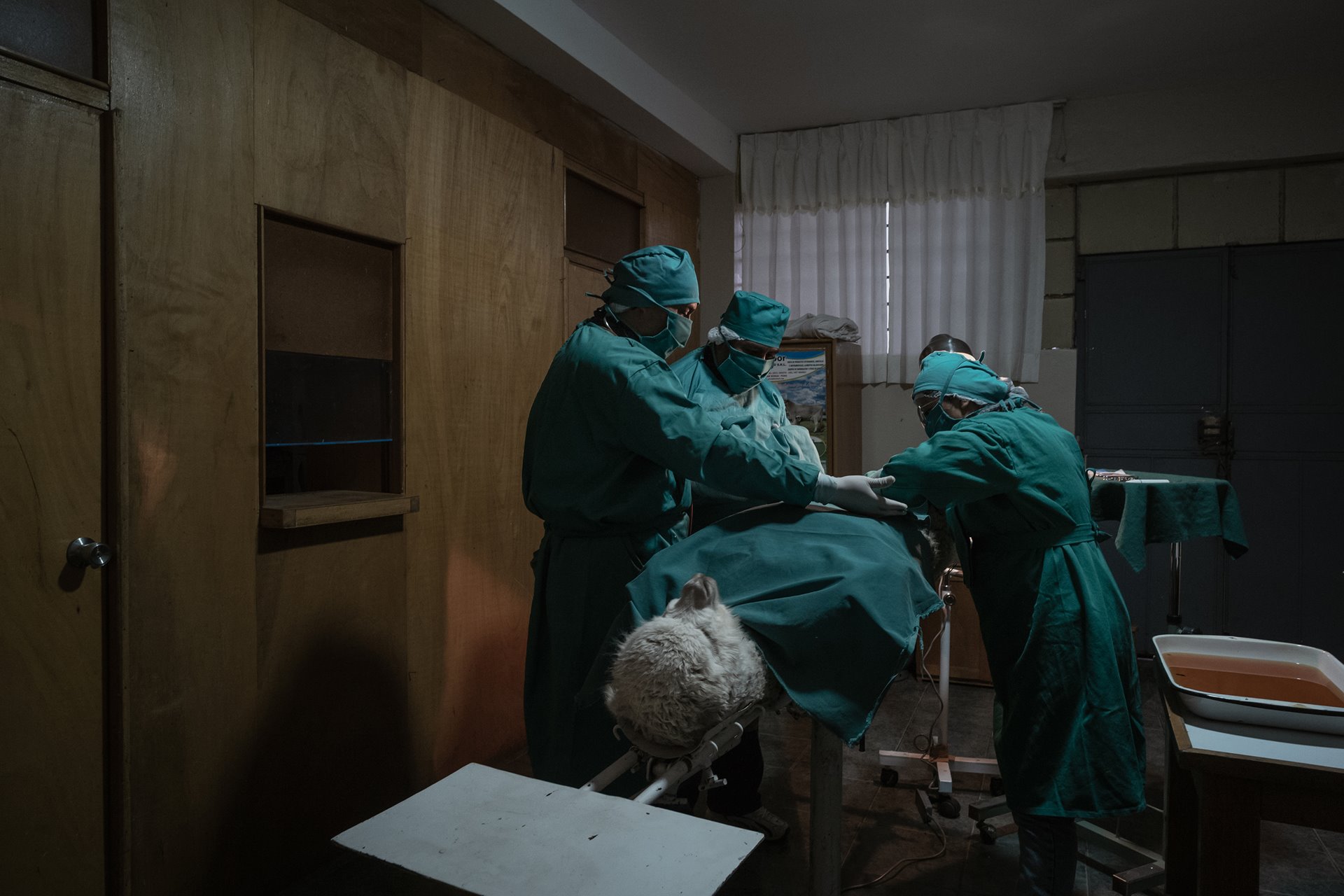A medical team prepares an alpaca for surgery to retrieve eggs for in vitro fertilization, at Quimsachata Research and Production Center, in Puno, Peru. The center houses the largest genetic reserve of alpaca breeds in the world.
Vital to the livelihoods of many people in the Peruvian Andes, alpacas face new challenges due to the climate crisis.
Part of the camelid family, alpacas can endure the high altitudes of the Andes and are a critical source of income for farmers in an environment where few or no crops can be cultivated. They are primarily bred for their fine fiber (wool), which is highly prized for knitwear and woven cloth. Tens of thousands of Andean families depend on raising alpacas or dealing in their fiber for subsistence. Among local Indigenous communities such as the Quechua, alpacas are also embedded in cultural and ritual life.
The climate crisis is putting alpacas and the communities they sustain at risk. Shorter rainy seasons and more intense, longer periods of drought are shrinking natural pastures and reducing the quality of the grass on which alpacas feed. In addition, meltwater from Peru’s glaciers, which supports high meadows during the long dry season, is declining rapidly. Peruvian glaciers retreated by 53 percent between 1962 and 2016.
These challenges threaten not only the alpacas, but the loss of high-Andean cultural identity, as alpaquero (alpaca-farmer) communities are forced to move to even greater altitudes, or to abandon their lifestyles entirely and seek work in low-lying cities. Scientists hope to help address the problem using biotechnology to create alpaca breeds more resistant to extremes in temperature. This would help the animals to survive harsh nights at higher altitudes, as well as thrive at lower elevations, since alpacas also suffer in warmer temperatures, from illnesses not present in highland areas.

